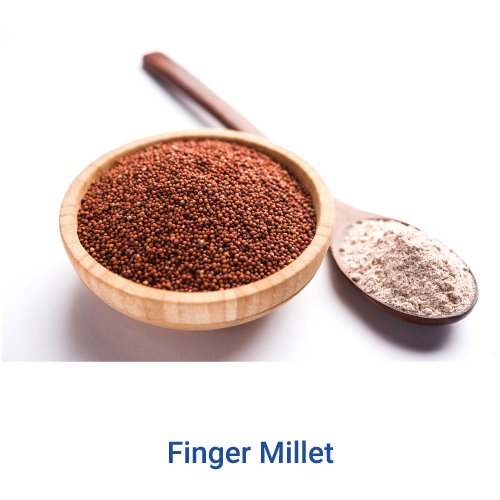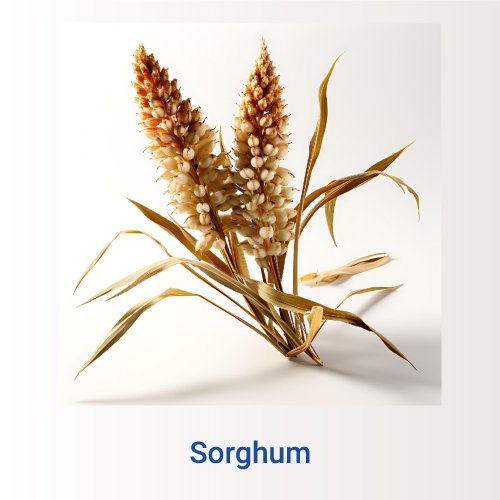As diabetes continues to be a major health challenge globally, dietary management plays a crucial role in controlling blood sugar levels. Millets, with their high fiber content and low glycemic index, have emerged as a beneficial dietary option for diabetics. Here we explore the five best millets for diabetes, discussing their specific benefits and how they compare to common staples like brown rice.
1. Foxtail Millet: A Top Choice for Blood Sugar Control

Foxtail millet is often heralded as the best millet for diabetes due to its notable fiber content and low glycemic index. This millet variety helps in the slow release of glucose into the bloodstream, thereby maintaining steady blood sugar levels. It’s not just good for blood sugar regulation; its nutrient density also supports overall health with minerals like magnesium and phosphorus.
- Rich in antioxidants
- Promotes digestive health with high fiber
- Supports heart health due to its lipid-lowering properties
2. Finger Millet: The Calcium Champion

Finger millet, also known as ragi, is highly recommended for diabetics because it significantly helps in controlling blood sugar levels, making it an excellent choice among millet for Diabetes. The high dietary fiber content slows down digestion, which in turn helps in minimizing blood sugar spikes. Additionally, finger millet is a superb source of calcium, which is beneficial for strengthening bones.
- Rich source of amino acids
- Gluten-free, making it suitable for those with gluten intolerance
- Enhances heart health by maintaining lower cholesterol levels
3. Barnyard Millet: Ideal for Weight Management

Barnyard millet stands out as the best millet for weight loss, offering a high fiber content that helps keep you full longer. For diabetics, managing weight is often a crucial part of maintaining overall health and regulating blood sugar levels. This millet has a low glycemic index and high fiber content, making it a suitable staple in a diabetic diet.
- Low in calories
- High antioxidant levels
- Gluten-free and rich in protein
4. Sorghum: The Versatile Grain

Sorghum, or jowar, is widely regarded as beneficial for diabetics due to its excellent nutrient profile and low glycemic index, positioning it as a key component among millets for diabetes. It’s versatile in the kitchen, and usable in various recipes from breads to salads, making it a preferred choice for many. Sorghum helps in managing cholesterol as well, contributing to cardiovascular health, which is vital for diabetics.
- Rich in protein and iron
- Helps in managing obesity, a common concern for diabetics
- Boosts energy levels without spiking blood sugar
5. Pearl Millet: The Fiber Powerhouse

Pearl millet is known for its ability to manage diabetes effectively, making it one of the best millets for diabetes. It is high in fiber, which aids in slow digestion and a more gradual increase in blood sugar levels. This millet is also a good source of magnesium, which plays a role in over 300 enzymatic reactions in the body, including the metabolism of glucose and insulin secretion.
- High in magnesium and potassium
- Supports gastrointestinal health
- Promotes a feeling of fullness, aiding in weight management
How to Incorporate Millets into Your Diabetic Diet
Adding millet to your diabetic diet can be both nutritious and enjoyable. Here are some practical tips on how to seamlessly integrate these grains into your daily meals:
Breakfast Options
Start your day with a millet-based breakfast. Foxtail millet porridge or finger millet pancakes can be excellent choices. They are not only filling but also releasing energy slowly, keeping blood sugar levels stable throughout the morning.
- Try millet flakes as an alternative to oatmeal
- Use millet flour in muffins and waffles for a nutritious twist
Main Meals
Replace white rice or other refined grains with the best millet for diabetes like sorghum and pearl millet in your main meals. Sorghum and pearl millet can be cooked similarly to rice and served with vegetables or lean meats. Their high fiber content aids in better glucose control and promotes satiety, which is crucial for weight management.
- Make a stir-fried jowar salad with lots of greens and a sprinkle of nuts
- Use millets to make risottos or pilafs, enhancing them with herbs and spices
Snacks
Millets can be used to make healthy snacks that are perfect for managing hunger pangs without spiking your blood sugar. Barnyard millet puffs or finger millet crackers are great options that keep you full and satisfied between meals.
- Prepare millet-based bars with nuts and seeds for an energy-boosting snack
- Roast and season millet for a crunchy, savoury treat
Desserts
For those with a sweet tooth, millets can be used in desserts that are indulgent yet healthy. Make a pearl millet pudding or sorghum cake that satisfies your cravings without compromising your blood sugar management.
- Blend cooked millet with fruits and yoghurt to create a delicious smoothie bowl
- Bake a batch of millet and apple muffins for a guilt-free dessert
Incorporating millet into various dishes not only diversifies your diet but also enhances the nutritional value of your meals, making it easier to manage diabetes effectively. With a little creativity, you can enjoy a wide range of tasty and healthful dishes that contribute to better health and well-being.
Brown Rice vs. Millets for Diabetes
While brown rice is a healthier alternative to white rice due to its higher fiber content, millets still stand superior when it comes to managing diabetes. Millets have a lower glycemic index compared to brown rice, which means they have a less significant impact on blood sugar levels.
- Millets release sugar slowly into the blood, preventing spikes
- Higher in essential nutrients compared to brown rice
Brown Rice
Brown rice is a whole grain that keeps its outer bran and germ layers, which makes it healthier than white rice. Here’s a quick look at its nutritional content per 100 grams (cooked):
Here’s a quick look at its nutritional content per 100 grams(cooked):
- Calories: 111
- Carbohydrates: 23g
- Fiber: 1.8g
- Protein: 2.6g
- Fat: 0.9g
Millets
Millets are a group of small-seeded grains, which include varieties like finger millet, pearl millet, and foxtail millet. Their nutritional content varies slightly by type, but here’s an average per 100 grams (cooked):
- Calories: 119
- Carbohydrates: 23g
- Fiber: 2.0g
- Protein: 4.0g
- Fat: 1.2g
How They Affect Blood Sugar
The glycemic index (GI) shows how quickly a food can raise your blood sugar. Foods with a lower glycemic index (GI) are more beneficial for people with diabetes.
- Brown Rice: Has a medium GI of about 50-55.
- Millets: Generally have a lower GI, usually between 50-65, which can help keep your blood sugar more stable.
Health Benefits for Diabetics
Brown Rice
- High in Fiber: Brown rice has fiber that helps with digestion and makes you feel full.
- Nutrients: It has important vitamins and minerals, including magnesium, which help control blood sugar levels.
- Antioxidants: Brown rice has antioxidants that can reduce inflammation in the body.
Millets
- More Fiber: Millets usually have more fiber than brown rice, which helps manage blood sugar levels.
- Nutrient-Rich: Millets are full of minerals like magnesium, iron, and phosphorus.
- Gluten-Free: Millets are naturally gluten-free, making them a great choice for people who can’t eat gluten.
Which Is Better?
Both brown rice and millets can be healthy choices for people with diabetes. However, millets might be a little better because they usually have a lower glycemic index and more fiber, which can help control blood sugar.
| Aspect | Brown Rice | Millets |
|---|---|---|
| Type | Whole grain rice | Group of small-seeded grains |
| Calories (per 100g) | 111 calories | 119 calories |
| Carbohydrates (per 100g) | 23g | 23g |
| Fiber (per 100g) | 1.8g | 2.0g |
| Protein (per 100g) | 2.6g | 4.0g |
| Fat (per 100g) | 0.9g | 1.2g |
| Glycemic Index (GI) | Medium (50-55) | Lower (50-65) |
| Nutritional Benefits | Rich in fiber, vitamins, and minerals | High in fiber, rich in minerals like magnesium, iron, and phosphorus |
| Gluten-Free | No | Yes |
| Health Benefits | Helps with digestion and inflammation | Aids in blood sugar control and overall health |
Are All Millets Good for Diabetes?
While most millets are beneficial for diabetes management due to their low glycemic index and high fiber content, it’s crucial to consume them in moderation. Each variety has its unique nutritional profile, and incorporating a diverse range of millets can cover more nutritional bases than sticking to just one type.
- Vary your millet intake to avoid nutritional monotony
- Consult with a dietician to tailor a diet that fits your specific health needs
Conclusion: Incorporating Millets into a Diabetic Diet
healthier lifestyle. Foxtail millet, particularly noted by Diabetologist expert Dr. Moxit Shah, stands out as the best millet for diabetes, especially in India, due to its availability and nutrient-rich profile. Whether you’re looking to manage weight or keep your blood sugar levels in check, millets are worth considering in your diet. Dr. Moxit Shah emphasizes that the key to effective diabetes management lies in a balanced diet and regular consultation with healthcare providers. Including the best millet for diabetes in your dietary routine can significantly improve your health outcomes.







